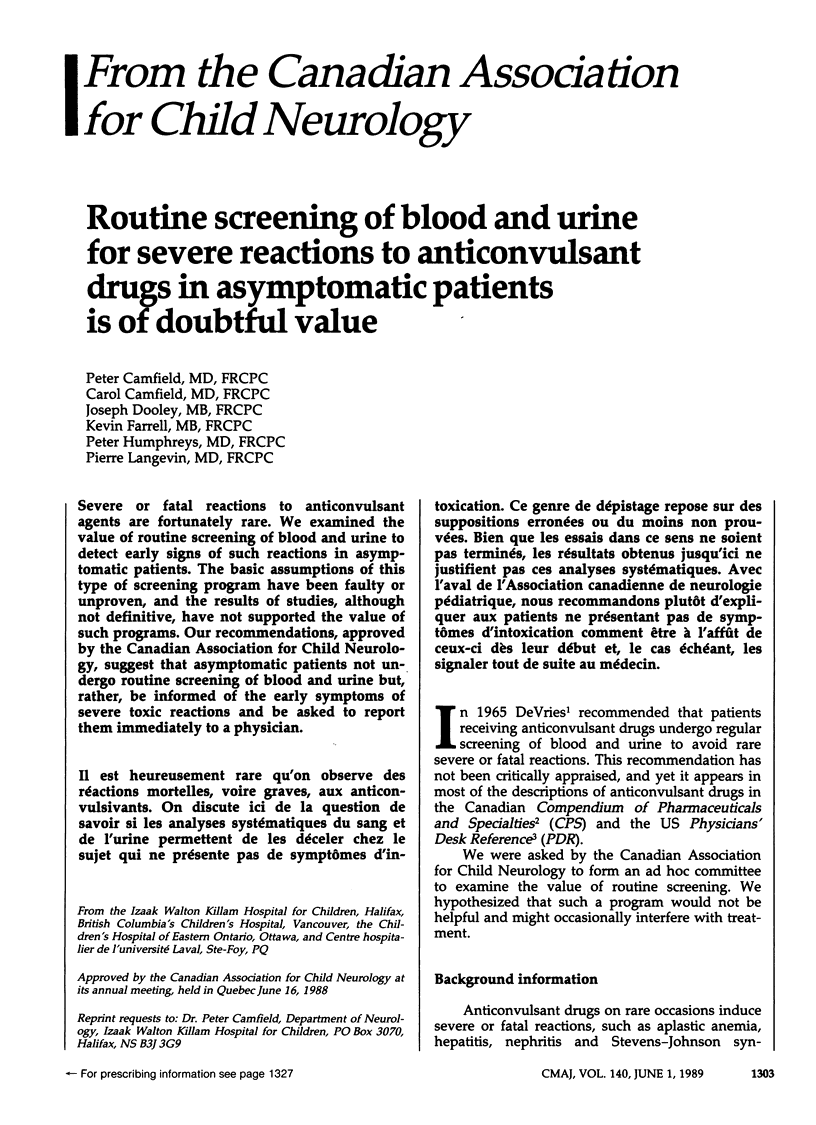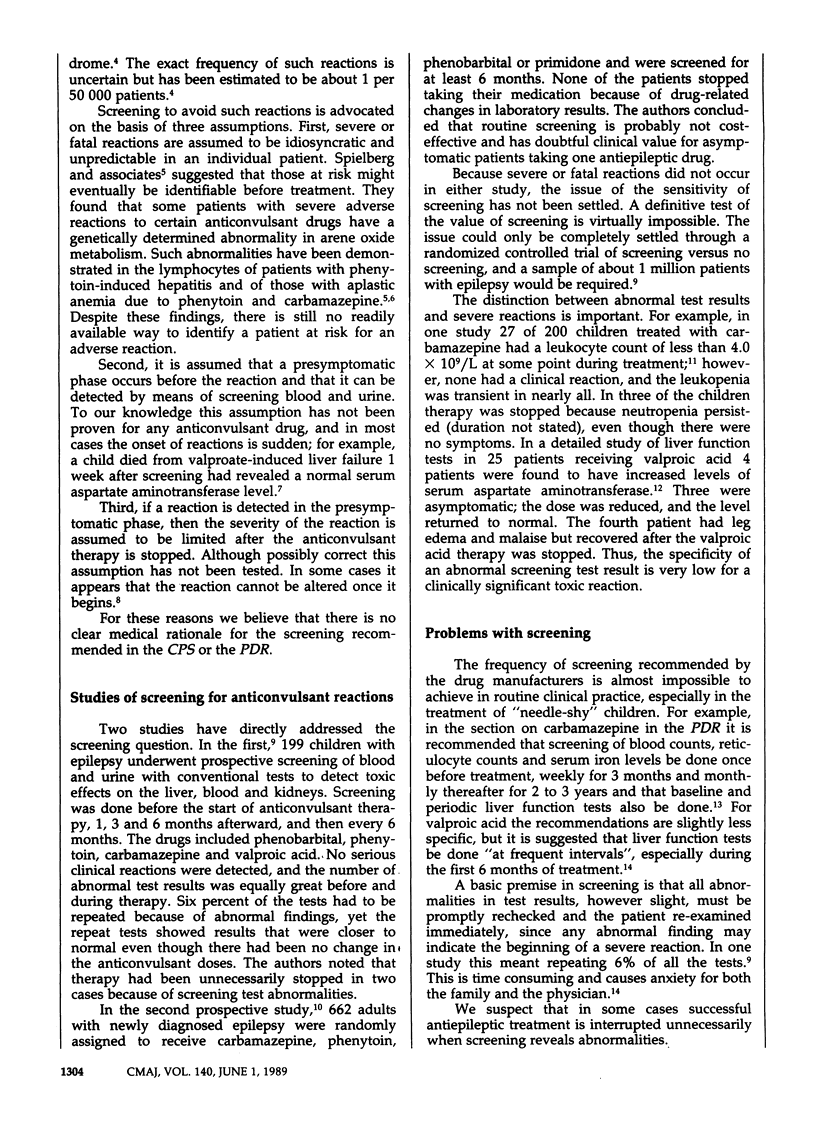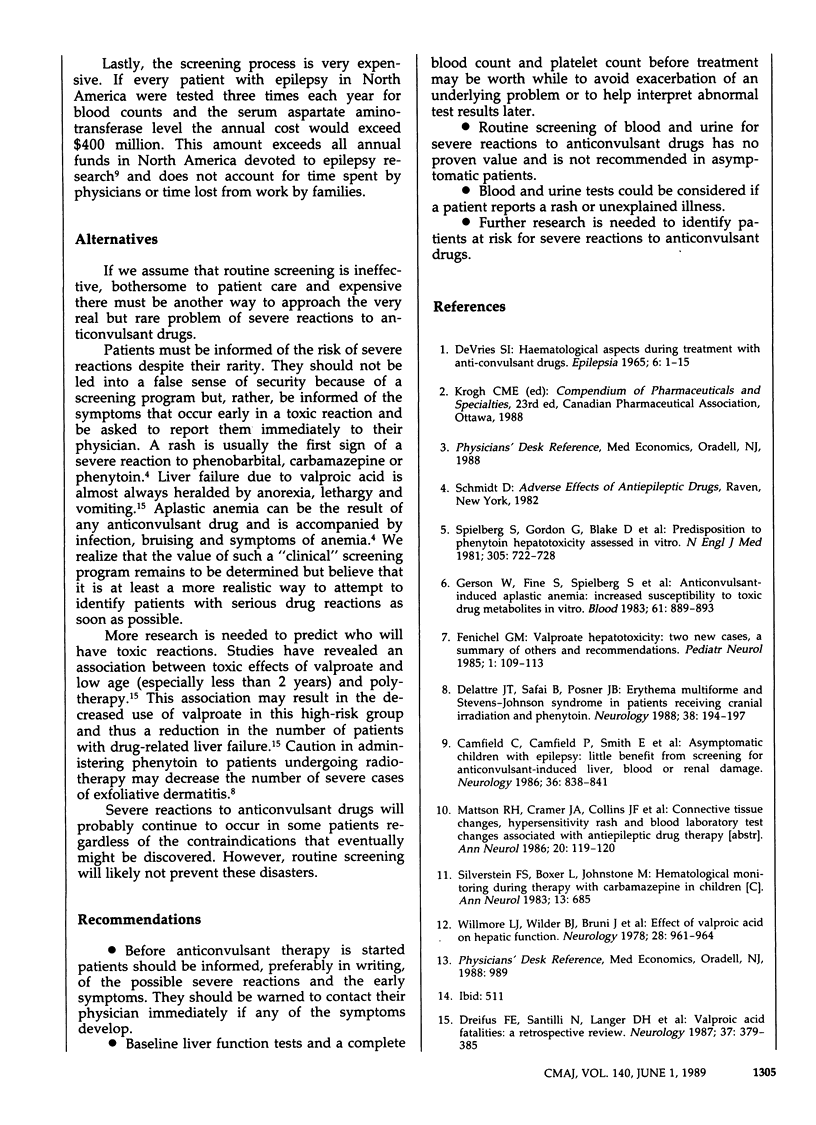Abstract
Severe or fatal reactions to anticonvulsant agents are fortunately rare. We examined the value of routine screening of blood and urine to detect early signs of such reactions in asymptomatic patients. The basic assumptions of this type of screening program have been faulty or unproven, and the results of studies, although not definitive, have not supported the value of such programs. Our recommendations, approved by the Canadian Association for Child Neurology, suggest that asymptomatic patients not undergo routine screening of blood and urine but, rather, be informed of the early symptoms of severe toxic reactions and be asked to report them immediately to a physician.
Full text
PDF


Selected References
These references are in PubMed. This may not be the complete list of references from this article.
- Camfield C., Camfield P., Smith E., Tibbles J. A. Asymptomatic children with epilepsy: little benefit from screening for anticonvulsant-induced liver, blood, or renal damage. Neurology. 1986 Jun;36(6):838–841. doi: 10.1212/wnl.36.6.838. [DOI] [PubMed] [Google Scholar]
- DE VRIES S. I. HAEMATOLOGICAL ASPECTS DURING TREATMENT WITH ANTICONVULSANT DRUGS. Epilepsia. 1965 Mar;6:1–15. doi: 10.1111/j.1528-1157.1965.tb03345.x. [DOI] [PubMed] [Google Scholar]
- Delattre J. Y., Safai B., Posner J. B. Erythema multiforme and Stevens-Johnson syndrome in patients receiving cranial irradiation and phenytoin. Neurology. 1988 Feb;38(2):194–198. doi: 10.1212/wnl.38.2.194. [DOI] [PubMed] [Google Scholar]
- Dreifuss F. E., Santilli N., Langer D. H., Sweeney K. P., Moline K. A., Menander K. B. Valproic acid hepatic fatalities: a retrospective review. Neurology. 1987 Mar;37(3):379–385. doi: 10.1212/wnl.37.3.379. [DOI] [PubMed] [Google Scholar]
- Fenichel G. M., Greene H. L. Valproate hepatotoxicity: two new cases, a summary of others, and recommendations. Pediatr Neurol. 1985 Mar-Apr;1(2):109–113. doi: 10.1016/0887-8994(85)90046-3. [DOI] [PubMed] [Google Scholar]
- Gerson W. T., Fine D. G., Spielberg S. P., Sensenbrenner L. L. Anticonvulsant-induced aplastic anemia: increased susceptibility to toxic drug metabolites in vitro. Blood. 1983 May;61(5):889–893. [PubMed] [Google Scholar]
- Silverstein F. S., Boxer L., Johnston M. V. Hematological monitoring during therapy with carbamazepine in children. Ann Neurol. 1983 Jun;13(6):685–686. doi: 10.1002/ana.410130622. [DOI] [PubMed] [Google Scholar]
- Spielberg S. P., Gordon G. B., Blake D. A., Goldstein D. A., Herlong H. F. Predisposition to phenytoin hepatotoxicity assessed in vitro. N Engl J Med. 1981 Sep 24;305(13):722–727. doi: 10.1056/NEJM198109243051302. [DOI] [PubMed] [Google Scholar]
- Willmore L. J., Wilder B. J., Bruni J., Villarreal H. J. Effect of valproic acid on hepatic function. Neurology. 1978 Sep;28(9 Pt 1):961–964. doi: 10.1212/wnl.28.9.961. [DOI] [PubMed] [Google Scholar]


